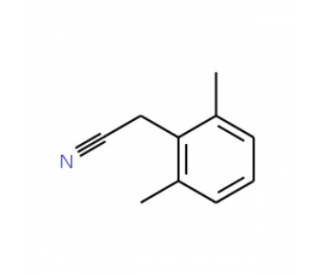详细说明
Purity
>95%, by SDS-PAGE under reducing conditions and visualized by Colloidal Coomassie® Blue stain
Activity
Recombinant Human USP2 Catalytic Domain is a Ubiquitin-specific deconjugating enzyme. Reaction conditions will need to be optimized for each specific application. We recommend an initial Recombinant Human USP2 Catalytic Domain concentration of 1-5 nM.
Source
E. coli-derived
Accession #
Predicted Molecular Mass
40 kDa
E-504 |
| |
Formulation 2.0 mg/ml (50 μM) in 50 mM HEPES pH 8.0, 150 mM NaCl, 0.1 mM EDTA, and 1 mM DTT. | ||
Shipping The product is shipped with dry ice or equivalent. Upon receipt, store it immediately at the temperature recommended below. | ||
Stability & Storage: Use a manual defrost freezer and avoid repeated freeze-thaw cycles.
|
Background: USP2
Ubiquitin Specific Peptidase 2 (USP2), also known as UBP41 and USP9, is a cytoplasmic protein that belongs to the peptidase C19 family of deubiquitinating enzymes (1). It is widely expressed and serves to deubiquitinate select target substrates. At least three isoforms have thus far been described: USP2a, also known as USP2-69, USP-41, and USP2-45 (2,3). All isoforms contain the same catalytic core, but show variations within their N- and C-terminal domains (3). USP2a is the canonical isoform. It is 605 amino acids (aa) in length and has a predicted molecular weight of 68 kDa. Human USP2a shares 90% aa sequence identity with the mouse and rat orthologs. USP-41 and USP-45 are 362 and 396 aa in length, respectively, and have predicted molecular weights of 41 and 45 kDa. USP-41 and USP2a have been shown to be critical regulators of apoptosis and cell proliferation. They deubiquitinate poly-ubiquitinated target proteins, such as FAS, MDM2, and Cyclin D1, to promote or block apoptosis, depending on the context (3-9). USP-45, whose expression appears to be regulated by circadian and nutritional cues, is thought to regulate hepatic gluconeogenesis and glucose metabolism (10,11).
This recombinant human protein encompasses the catalytic domain of USP2 (aa 259-605).
References:
Baek, S.H. et al. (1997) J. Biol. Chem. 272:25560.
Gousseva, N. & R.T. Baker (2003) Gene Expr. 11:163.
Haimerl, F. et al. (2009) J. Biol. Chem. 284:495.
Gewies, A. & S. Grimm (2003) Cancer Res. 63:682.
Graner, E. et al. (2004) Cancer Cell 5:253.
Stevenson, L.F. et al. (2007) EMBO J. 26:976.
Shan, J. et al. (2009) Mol. Cell 36:469.
Mahul-Mellier, A.L. et al. (2012) Cell Death Differ. 19:891.
Mahul-Mellier, A.L. et al. (2012) Biochim. Biophys. Acta. 1823:1353.
Molusky, M.M. et al. (2012) Diabetes 61:1025.
Molusky, M.M. et al. (2012) PLoS One 7:e47970.
Long Name:
Ubiquitin-specific Protease 2
Entrez Gene IDs:
9099 (Human); 53376 (Mouse); 115771 (Rat)
Alternate Names:
Deubiquitinating enzyme 2; EC 3.1.2.15; EC 3.4.19.12,41 kDa ubiquitin-specific protease; ubiquitin specific peptidase 2; ubiquitin specific protease 12; ubiquitin specific protease 2; ubiquitin specific protease 9; ubiquitin thioesterase 2; Ubiquitin thiolesterase 2; Ubiquitin-specific-processing protease 2; UBP41; UBP41ubiquitin carboxyl-terminal hydrolase 2; USP2; USP9











 粤公网安备44196802000105号
粤公网安备44196802000105号